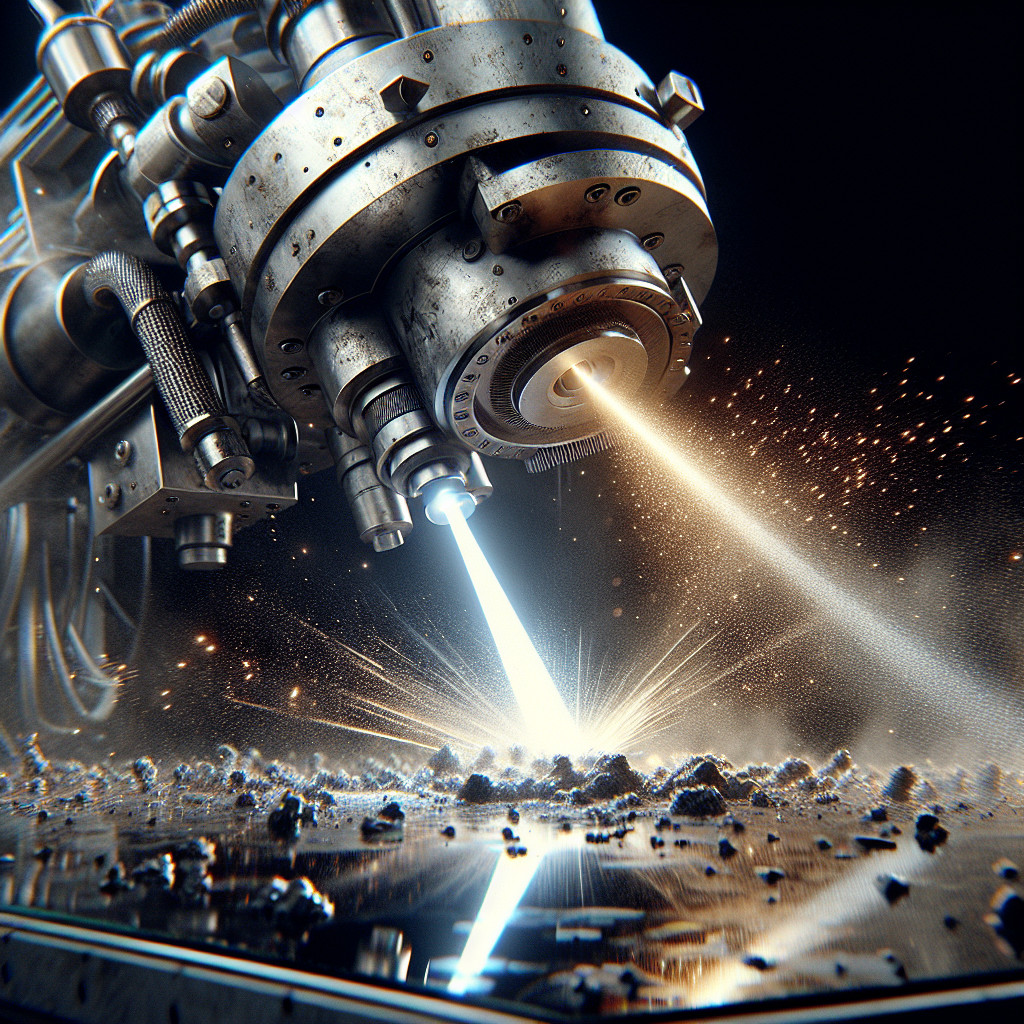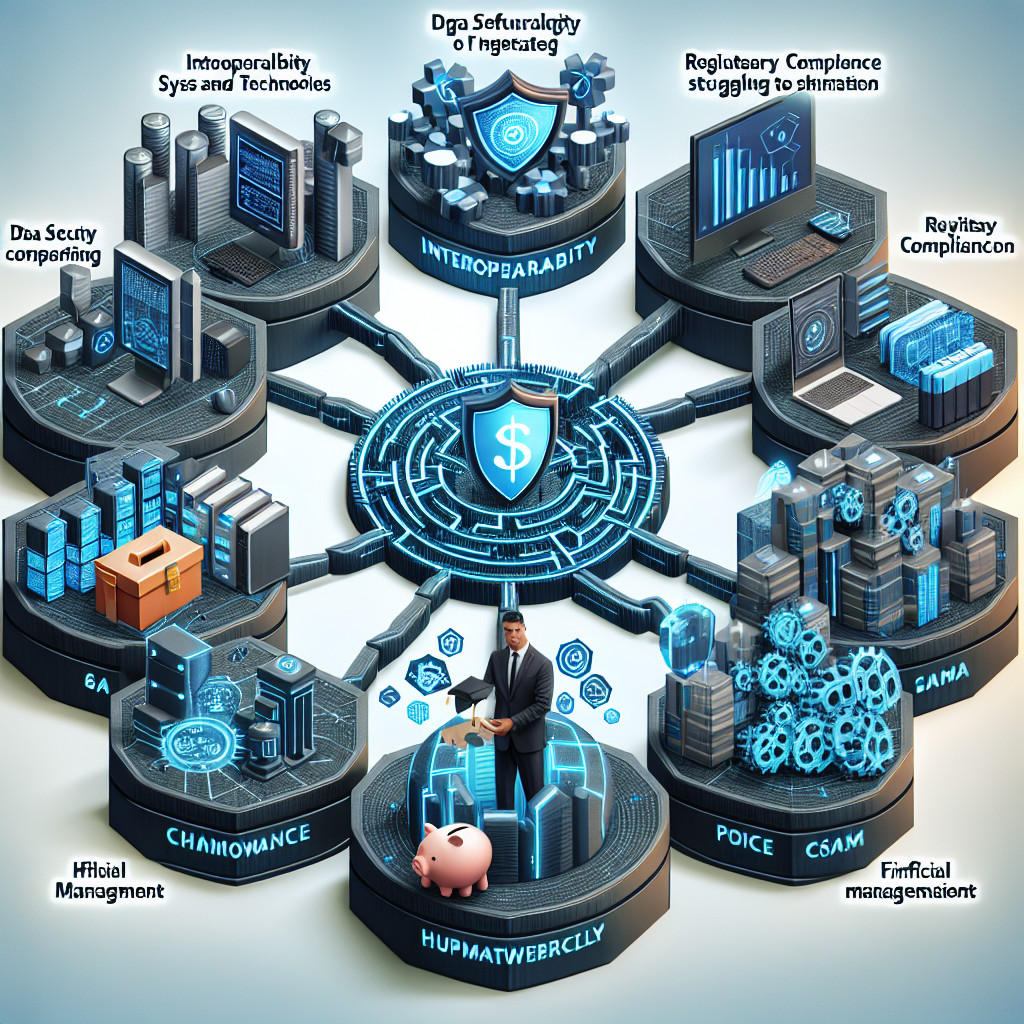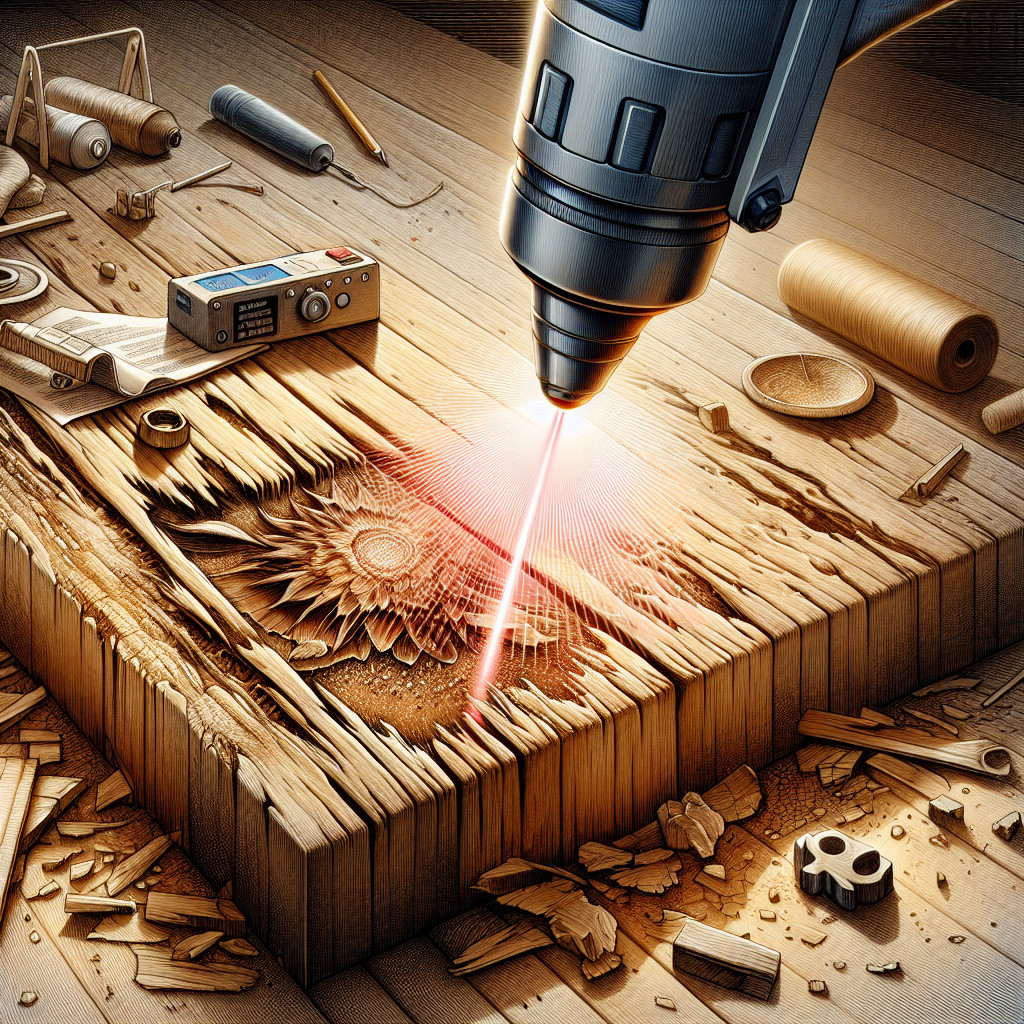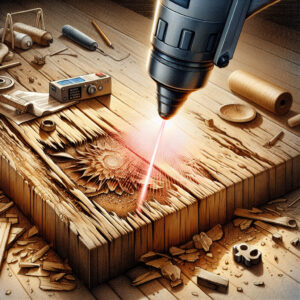
- Types of contaminants on glass surfaces
- Benefits of laser cleaning over traditional methods
- Challenges and limitations of laser cleaning technology
- Impact of laser cleaning on the quality of glass surfaces
- Regulatory standards for laser cleaning in the glass industry
- Comparison of laser cleaning with mechanical methods for glass surfaces
- Role of laser cleaning in preserving historical glass artifacts
- Advantages of laser cleaning for removing biofilm from glass surfaces
Types of contaminants on glass surfaces
1. Water spots:
Water spots are one of the most common contaminants found on glass surfaces. They are caused by mineral deposits left behind when water evaporates. These spots can be difficult to remove and may require the use of a specialized cleaner.
2. Fingerprints:
Fingerprints are another common contaminant found on glass surfaces, especially on windows and mirrors. They are caused by the natural oils and dirt on our skin and can be easily removed with a glass cleaner.
3. Dust and dirt:
Dust and dirt can accumulate on glass surfaces over time, making them appear dirty and dull. Regular cleaning with a microfiber cloth or glass cleaner can help remove these contaminants and restore the shine of the glass.
4. Soap scum:
Soap scum is a common contaminant found on glass shower doors and windows. It is caused by the buildup of soap residue and minerals from hard water. A mixture of vinegar and water can help dissolve and remove soap scum from glass surfaces.
5. Hard water stains:
Hard water stains are caused by the minerals in hard water that can leave behind a white, chalky residue on glass surfaces. These stains can be difficult to remove and may require the use of a specialized cleaner or a mixture of vinegar and water.
6. Grease and oil:
Grease and oil can also be found on glass surfaces, especially in kitchens and bathrooms. These contaminants can be easily removed with a degreaser or a mixture of dish soap and water.
7. Mold and mildew:
Mold and mildew can grow on glass surfaces in damp and humid environments, such as bathrooms and basements. These contaminants can be harmful to health and should be removed with a mixture of bleach and water.
8. Paint and adhesive residue:
Paint and adhesive residue can be left behind on glass surfaces during renovation or construction projects. These contaminants can be difficult to remove and may require the use of a scraper or a solvent-based cleaner.
9. Hard water deposits:
Hard water deposits are caused by the minerals in hard water that can leave behind a cloudy film on glass surfaces. These deposits can be removed with a mixture of vinegar and water or a commercial glass cleaner.
10. Graffiti:
Graffiti can be found on glass surfaces in urban areas and public spaces. It can be difficult to remove and may require the use of a specialized graffiti remover.
Conclusion:
It is important to identify the types of contaminants on glass surfaces in order to effectively clean and maintain them. Regular cleaning and maintenance can help prevent the buildup of contaminants and keep glass surfaces looking clean and clear.
- Water spots
- Fingerprints
- Dust and dirt
- Soap scum
- Hard water stains
- Grease and oil
- Mold and mildew
- Paint and adhesive residue
- Hard water deposits
- Graffiti
- Water spots
- Fingerprints
- Dust and dirt
- Soap scum
- Hard water stains
- Grease and oil
- Mold and mildew
- Paint and adhesive residue
- Hard water deposits
- Graffiti
#glasscleaning #contaminants #cleaningtips #glassmaintenance
Types of contaminants on glass surfaces, how to remove water spots from glass, preventing fingerprints on glass, cleaning soap scum from glass, removing hard water stains from glass, tips for cleaning glass surfaces, maintaining glass windows and mirrors, removing grease and oil from glass, preventing mold and mildew on glass, removing paint and adhesive residue from glass, cleaning hard water deposits from glass, removing graffiti from glass surfaces
Benefits of laser cleaning over traditional methods
Efficiency
- Laser cleaning is incredibly fast, with the ability to remove contaminants in a fraction of the time it takes traditional methods.
- It is also more precise, allowing for targeted cleaning without damaging the underlying surface.
- With laser cleaning, there is no need for chemicals or abrasive materials, reducing the time and cost associated with traditional cleaning methods.
Environmental impact
- Laser cleaning is a non-contact process, meaning there is no need for harsh chemicals that can harm the environment.
- It also produces less waste, as there are no consumables used in the cleaning process.
- Overall, laser cleaning is a more sustainable option for industries looking to reduce their environmental footprint.
Versatility
- Laser cleaning can be used on a wide range of materials, including metals, plastics, and composites.
- It is effective for removing rust, paint, grease, and other contaminants from surfaces.
- With adjustable power settings, laser cleaning can be tailored to suit different cleaning requirements.
Overall, laser cleaning offers a range of benefits that make it a superior choice over traditional cleaning methods. From increased efficiency to reduced environmental impact, laser cleaning is revolutionizing the way industries approach surface cleaning.
#laser cleaning, benefits, efficiency, environmental impact, versatility
long tail phrases: benefits of laser cleaning, advantages of laser cleaning over traditional methods, laser cleaning technology, sustainable cleaning option, laser cleaning applications.
Challenges and limitations of laser cleaning technology
2. Surface damage: Laser cleaning can sometimes cause damage to the surface being cleaned, especially if the laser intensity is too high. This can result in discoloration, melting, or even pitting of the surface.
3. Safety concerns: Laser cleaning technology involves the use of high-powered lasers, which can pose a safety risk if not used properly. Proper training and safety protocols are essential to prevent accidents and injuries.
4. Cost: Laser cleaning technology can be expensive to implement, especially for small businesses or individuals. The cost of purchasing and maintaining the equipment, as well as training personnel, can be prohibitive for some.
5. Environmental impact: Laser cleaning technology can generate hazardous waste, such as fumes and debris, which need to be properly disposed of. This can add to the overall cost and complexity of using laser cleaning technology.
Despite these challenges and limitations, laser cleaning technology offers many benefits, such as precision cleaning, minimal waste generation, and the ability to clean hard-to-reach areas. By addressing these challenges and limitations, we can continue to improve and expand the use of laser cleaning technology in various industries.
#laser #cleaning #technology #challenges #limitations
Długie ogony:
– laser cleaning technology challenges
– limitations of laser cleaning technology
– laser cleaning technology surface damage
– laser cleaning technology safety concerns
– laser cleaning technology cost
– laser cleaning technology environmental impact
Impact of laser cleaning on the quality of glass surfaces
Effects of laser cleaning on glass surfaces
One of the main benefits of laser cleaning on glass surfaces is its ability to remove contaminants without damaging the surface of the glass. Traditional cleaning methods such as chemical cleaning or abrasive cleaning can often leave scratches or residue on the glass, affecting its clarity and overall appearance. Laser cleaning, on the other hand, uses a focused beam of light to vaporize contaminants on the surface of the glass, leaving behind a clean and pristine surface.
Another advantage of laser cleaning on glass surfaces is its precision. The focused beam of light can target specific areas of the glass, allowing for precise cleaning of intricate designs or delicate surfaces. This level of precision is especially important in industries such as electronics or optics, where even the smallest amount of contamination can affect the performance of the glass.
Improving the quality of glass surfaces
By using laser cleaning technology, manufacturers can improve the quality of their glass surfaces in several ways. Firstly, laser cleaning can remove contaminants that traditional cleaning methods may struggle to remove, such as stubborn stains or residues. This results in a cleaner and more visually appealing glass surface.
Additionally, laser cleaning can also improve the durability of glass surfaces. By removing contaminants that can weaken the glass, such as dirt or grease, laser cleaning can help extend the lifespan of the glass and reduce the likelihood of damage or breakage.
Conclusion
In conclusion, laser cleaning has a significant impact on the quality of glass surfaces. By removing contaminants with precision and without damaging the surface of the glass, laser cleaning can improve the overall appearance and durability of glass surfaces. Manufacturers looking to enhance the quality of their glass products should consider incorporating laser cleaning technology into their production processes.
| Keyword | Impact |
|---|---|
| Laser cleaning | Improves quality of glass surfaces |
| Precision | Target specific areas for cleaning |
| Durability | Extend lifespan of glass surfaces |
hashtags: #glasscleaning #laser #quality #precision #durability
Keywords: laser cleaning, precision, durability
Long-tail phrases: impact of laser cleaning on glass surfaces, improving quality of glass surfaces with laser cleaning
Regulatory standards for laser cleaning in the glass industry
Why are regulatory standards important?
Regulatory standards are essential for ensuring that laser cleaning processes are carried out safely and effectively. Without proper regulations in place, there is a risk of accidents, injuries, and damage to equipment and materials. Regulatory standards help to establish guidelines for the use of laser cleaning technology, including safety protocols, training requirements, and quality control measures.
Key
1. Safety regulations: Safety is paramount when it comes to laser cleaning in the glass industry. Regulatory standards should outline safety protocols for operators, including the use of protective gear, proper ventilation, and emergency procedures in case of accidents.
2. Quality control measures: Regulatory standards should also address the quality of laser cleaning processes in the glass industry. This includes guidelines for assessing the effectiveness of cleaning, monitoring equipment performance, and ensuring consistent results.
3. Training requirements: Proper training is essential for operators using laser cleaning technology in the glass industry. Regulatory standards should outline the training requirements for operators, including certification programs and ongoing education to stay up-to-date on the latest technology and safety protocols.
4. Environmental regulations: Laser cleaning can produce hazardous waste and emissions that need to be properly managed. Regulatory standards should address environmental concerns, including guidelines for waste disposal, emissions control, and compliance with local regulations.
5. Industry best practices: In addition to regulatory standards, industry best practices can help to improve the effectiveness and safety of laser cleaning in the glass industry. These best practices may include recommendations for equipment maintenance, process optimization, and quality assurance.
Conclusion
In conclusion, regulatory standards are essential for ensuring the safety and effectiveness of laser cleaning in the glass industry. By establishing guidelines for safety, quality control, training, environmental management, and industry best practices, regulatory standards can help to promote the responsible use of laser cleaning technology in the glass industry.
#RegulatoryStandards #LaserCleaning #GlassIndustry
Keywords: laser cleaning, glass industry, regulatory standards, safety protocols, quality control, training requirements, environmental regulations, industry best practices
Long-tail phrases: “importance of “, “safety measures for laser cleaning in the glass industry”, “training requirements for laser cleaning operators”, “environmental regulations for laser cleaning”, “industry best practices for laser cleaning in glass manufacturing”
Comparison of laser cleaning with mechanical methods for glass surfaces
Laser cleaning is a non-contact method that uses high-energy laser beams to remove contaminants from the surface of the glass. This process is highly precise and can be used to clean intricate patterns and delicate surfaces without causing damage. Mechanical methods, on the other hand, involve the use of abrasive materials or tools to scrub away dirt and grime from the glass surface.
When comparing laser cleaning with mechanical methods for glass surfaces, several factors need to be considered, including efficiency, cost, and environmental impact. Laser cleaning is often faster and more efficient than mechanical methods, as it can clean large areas quickly and with minimal effort. However, laser cleaning equipment can be expensive to purchase and maintain, making it less cost-effective for some applications.
In terms of environmental impact, laser cleaning is considered more eco-friendly than mechanical methods, as it does not produce any waste or emissions. Mechanical methods, on the other hand, can generate dust and debris that may need to be disposed of properly. Additionally, laser cleaning does not require the use of chemicals or solvents, making it a safer option for cleaning glass surfaces.
Overall, the choice between laser cleaning and mechanical methods for glass surfaces will depend on the specific requirements of the application. While laser cleaning may be more efficient and environmentally friendly, it may not be cost-effective for all situations. Mechanical methods, while slower and less precise, may be more affordable and practical for some applications.
In conclusion, both laser cleaning and mechanical methods have their advantages and disadvantages when it comes to cleaning glass surfaces. It is important to consider factors such as efficiency, cost, and environmental impact when choosing the best method for a particular application.
Hashtags: #glasscleaning #laser vs #mechanical #efficiency #cost #environmentalimpact
Keywords: glass surfaces, laser cleaning, mechanical methods, efficiency, cost, environmental impact
Long-tail phrases: “”, “efficiency and cost of laser cleaning for glass surfaces”, “environmental impact of different cleaning methods for glass surfaces”
Role of laser cleaning in preserving historical glass artifacts
By using laser cleaning, conservators can safely and effectively remove dirt and other pollutants from historical glass artifacts, revealing their original beauty and craftsmanship. This process not only helps to preserve the artifacts for future generations but also allows researchers to study them more closely and gain a better understanding of our cultural history.
Furthermore, laser cleaning is a precise and controlled method that can target specific areas of a glass artifact without affecting the surrounding material. This level of precision is essential for preserving intricate designs and details that may be present on historical glass artifacts.
In addition to cleaning, laser technology can also be used for restoration purposes, such as removing scratches, stains, and other imperfections from the surface of glass artifacts. This can help to restore the artifacts to their original condition and enhance their aesthetic appeal.
Overall, the role of laser cleaning in preserving historical glass artifacts cannot be overstated. This innovative technique offers a safe, effective, and precise method for cleaning and restoring these valuable pieces of our cultural heritage, ensuring that they will be enjoyed and studied for generations to come.
- Safe and non-abrasive cleaning method
- Precise and controlled restoration process
- Enhances aesthetic appeal of glass artifacts
- Preserves intricate designs and details
- Historical glass artifacts
- Laser cleaning
- Preservation techniques
- Cultural heritage
- Conservation
#glassartifacts #laser cleaning #preservation #culturalheritage #conservation
Advantages of laser cleaning for removing biofilm from glass surfaces
Advantages of laser cleaning:
| Advantage | Description |
|---|---|
| 1. Precision | Laser cleaning can target specific areas of biofilm without damaging the underlying glass surface. |
| 2. Efficiency | Laser cleaning is faster and more efficient than traditional cleaning methods, reducing downtime and labor costs. |
| 3. Eco-friendly | Laser cleaning does not require the use of harsh chemicals, making it a more environmentally friendly option. |
| 4. Non-contact | Laser cleaning is a non-contact method, reducing the risk of damage to delicate glass surfaces. |
| 5. Versatility | Laser cleaning can be used on a variety of glass surfaces, including curved or irregular shapes. |
Overall, laser cleaning offers a highly effective and efficient solution for removing biofilm from glass surfaces. Its precision, efficiency, eco-friendliness, non-contact nature, and versatility make it a superior choice for maintaining clean and clear glass surfaces in a variety of environments.
Hashtags:
#laser #cleaning #biofilm #glass #surfaces
Keywords:
Laser cleaning, biofilm removal, glass surfaces, advantages, efficiency
Long-tail phrases:
Advantages of laser cleaning for removing biofilm from glass surfaces, benefits of laser cleaning over traditional methods, precision and efficiency of laser cleaning







